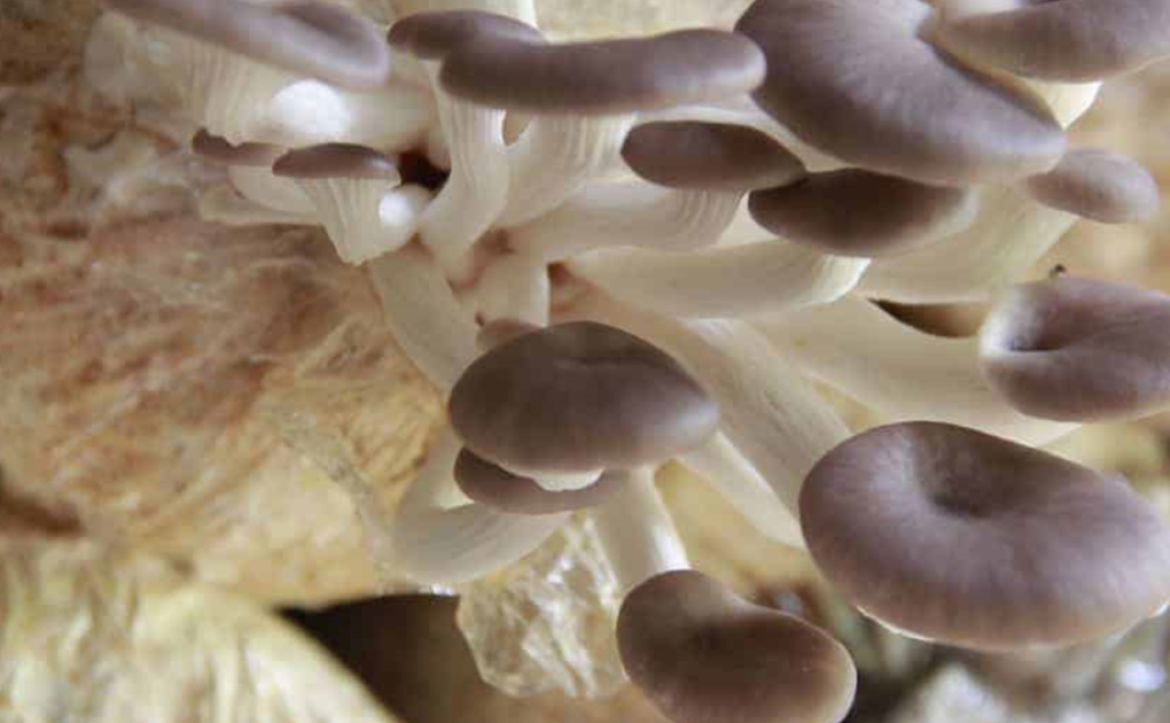
We can’t cultivate mushrooms in the same way we grow vegetables in the garden; it’s a completely different method. However, mushroom cultivation is neither complicated nor easy. If you have the necessary ingredients for cultivation at hand, But the mushrooms you find at first will be difficult to express in the mouth and the whole journey will prove to be wonderful. Your family will love the mushrooms you grow, keeping everyone healthy because they are low in calories and fat and packed with several nutrients, including high fiber, selenium and potassium, which are very beneficial for health.
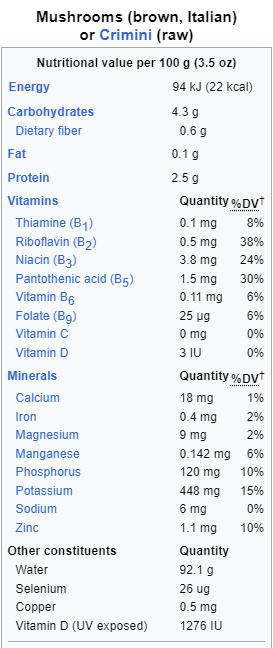
The best mushrooms you can grow
White oysters:
If you are a first-time mushroom grower, you can start with white button mushrooms because the spores of these white buttons grow very quickly and you can plant them at home and grow them throughout the year. and then sell it to the market.
These mushrooms are famous for their large yields. About 85 to 90% humidity is required to grow well. They are pale and mild in taste. They are usually grown on beech, poplar, or hornbeam wood.
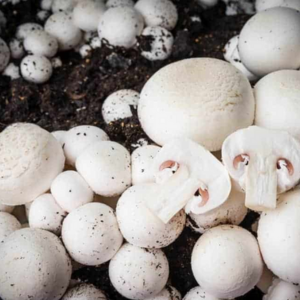
Oysters:
These oyster mushrooms usually grow on dead trees; you can cut logs or grow them to certain levels. It is a delicious dish for your family because you will taste some seafood flavor in it.
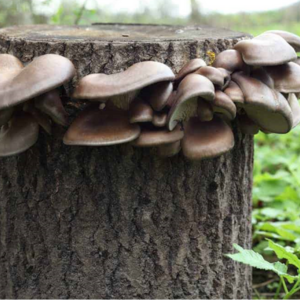
Black oysters:
These types of mushrooms are generally popular for growing indoors, and they have a strong flavor that has made them very popular.
Pearl Oysters:
I love these gorgeous, succulent mushrooms with their mild flavor and velvety texture. Best of all, you can grow them in cardboard packaging.
Pink oysters:
they look quite exotic, don’t they? Even beginners can grow these tropical mushrooms. Provide an adequate container, a high level of humidity, and the right temperature, and your oysters will give you a bountiful harvest.
Yellow Oyster:
These brightly colored mushrooms grow best on sawdust substrates when temperatures and humidity are high. Unfortunately, you can’t grow them if you live in an area with a dry climate.
Gray Oysters:
These grow best from a white layer, and you need to provide a high level of humidity and enough fresh air for a bountiful yield.
The most common mushrooms you can to grow at home | |
Commercial name | Latin name |
Shiitake | Lentinus edodes |
Oyster | Pleurotus sp. |
Enoki | Flammulina velutipes |
Matsutake | Armillaria matsutake |
White button | Agaricus bisporus |
Lion’s Mane | Hericium erinaceus |
Maitake | Grifola Frondosa |
Morel | Morchella angusticeps |
Reishi | Ganoderma lucidum |
Shiitake:
Shiitake is an edible mushroom native to East Asia, cultivated and eaten around the world. Some traditional medicine systems recognize it as a beneficial mushroom.
This delicious and fleshy mushroom can be grown on cut hardwood logs that have decayed or fallen. It is not only tasty but also boosts the immune system and plays a significant role in weight loss.
Both fresh and dried shiitake mushrooms are widely used in East Asian cooking. In Japan, they are served in miso soup, used as the base for a type of vegetarian dashi, and employed as an ingredient in many steamed and boiled dishes.
In a 100-gram reference-serving, raw shiitake mushrooms provide 34 kcal of dietary energy and are composed of 90% water, 7% carbohydrates, 2% protein and less than 1% fat. Raw shiitake mushrooms contain moderate levels of some dietary minerals.
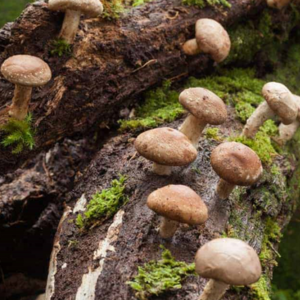
Reishi:
Lingzhi, also known as reishi from the Japanese pronunciation, is the ancient “mushroom of immortality,” revered for more than 2,000 years, with its use suggested in Neolithic China around 6,800 years ago.
Lingzhi is found growing as a parasite on a variety of plants in East Asia. In the wild, Lingzhi grows on the roots and stumps of deciduous trees, especially maples. Since these mushrooms are known for their medicinal properties, you can grow them outdoors and expect high yields.
Due to its bitter taste, Lingzhi is traditionally processed into a hot water extract for use in traditional medicine. Alternatively, an extract can be used to make it (in liquid, capsule, or powder form). It can be processed into tablets or capsules for direct consumption, or made into tea or soup. Additionally, Lingzhi mycelium is used to make bricks.
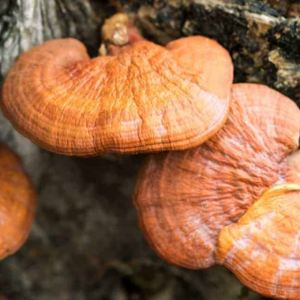
Morel:
You can eat all parts of this beautiful, pinecone-shaped mushroom when it’s young. When fully mature, you can only use the caps as the stalks can be somewhat woody and therefore unusable. In the second year, the harvest is abundant, and you can enjoy their fleshy texture, with a nutty or earthy taste.
Morels have been highly valued in Europe, to the extent that people used to burn their own forests hoping to encourage a plentiful morel harvest the following spring!
Morels are featured in various cuisines, including Provençal cuisine. Chefs worldwide highly regard their flavor, often using specific recipes and methods to showcase and preserve it. Like most edible fungi, they are best when collected or bought fresh. They are sometimes added to meat and poultry dishes and soups and can be used as pasta fillings. As morels are known to contain thermolabile toxins, they must be cooked before eating.
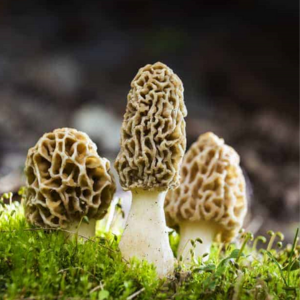
Maitake:
Chicken-textured mushrooms usually grow on the roots of dead trees or at the base of trees, especially old oaks or maples. They can be cultivated at home using a special layer. These mushrooms have earned their place among the most valuable mushrooms in the world due to their rich taste.
They are typically available from late summer to early fall and are native to China, Europe, and North America.
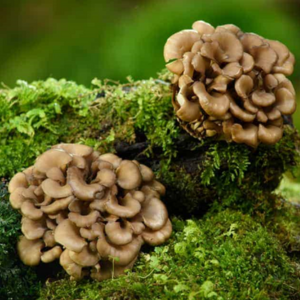
How to Grow Mushrooms at Home
Mushrooms are produced by mycelium and not by seeds. This mycelium is a network of cells. If they sense that the environment has deteriorated, they release spores that are dispersed through the air and seek a better environment. If they find a suitable environment, they grow mushrooms anew.
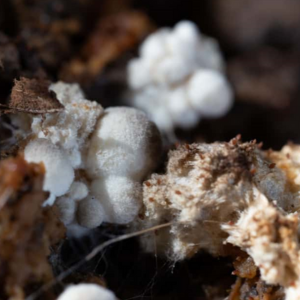
You should purchase the seeds, i.e., spores, for mushroom production. However, it’s important to note that spores do not contain any chlorophyll for germination, which means they need to be provided with a special substrate to grow healthily. Depending on the type of mushroom you choose, a wood chip, straw grain, sawdust, or wood plug can be used. Mixing these nutrients with the mushroom layers produces a kind of starter, known as spawn, for mushroom mycelium growth..
Choosing the Right Mushroom for You
First, select the mushroom of your choice to grow at home. White button, oyster, and shiitake mushrooms are the most convenient to grow in stages at home. It’s important to remember that the different growing conditions they require depend on their nutrient content. For example:
Oysters grow best in coffee grounds or straw.
Shiitake grows best on sawdust.
White buttons grow best in manure.
.
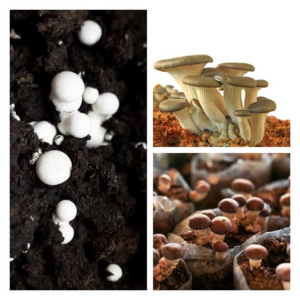
Grow Mycelia Inoculants
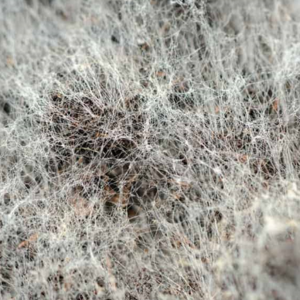
First, grow the mycelia inoculant for about three weeks. Then, order enough starter culture and add it to a life-free agar tray or nutrient water. Select a room that is completely dark and place the tray there. This will cause the mycelium to grow very quickly, thereby colonizing the substrate.
Buy Enough Mushroom Spawn
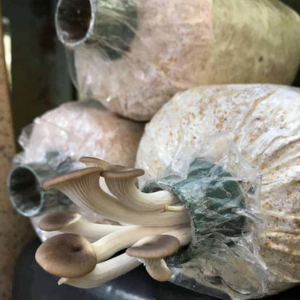
What we call spawn is actually a mixture of sawdust and mycelium. Spawn is wiser to buy than spores because it requires less time and effort. You can farm the spawn yourself if necessary, although it’s a complicated process for beginners.
Preparation of Fruiting Substrate
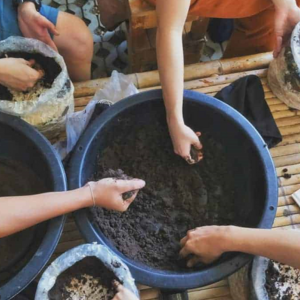
Disinfect the substrate first. To destroy any life-threatening mycelia, microwave it for 2 minutes. Then, add a cup of spawn and a few teaspoons of gypsum to about 20 liters of substrate. Press the mixture into a plastic bucket with perforated holes. A ten-liter bucket needs two to five holes about 2 cm apart. Heating the substrate and helping the mycelia to spread is an interesting point.
Incubation
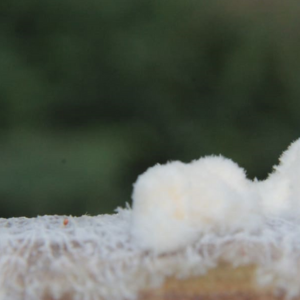
Place the buckets with the substrate in a dark place for about two to four weeks, depending on the type of mushroom you want to grow. You’ll know the substrate is fully colonized when the white mycelium completely outgrows the mulch, at which point you’ll terminate the incubation.
Fruiting
When the fruiting stage begins, the mycelium will form small gills and colonize the substrate. At this point, move the bucket to a moist, well-ventilated, and warm place. If you feel it’s too much work, you can buy a mushroom kit, which is basically the mycelium that has colonized the substrate. In this case, you just have to wait for the mushroom caps to progress.
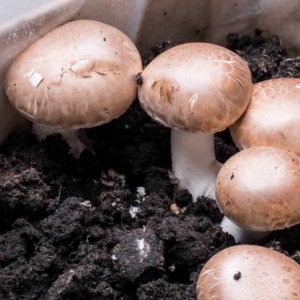
Keep a thermometer to check the room temperature. Maintain the temperature between 18 and 21 degrees Celsius and take appropriate measures to prevent overheating. If the temperature drops below 15.5 degrees Celsius, your mushrooms will grow slowly, or it’s possible that they won’t grow at all.
How to Care for Mushrooms
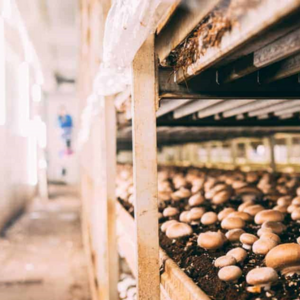
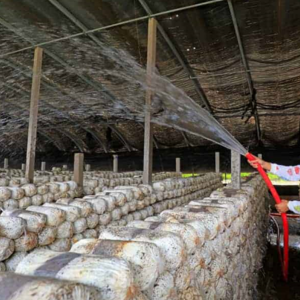
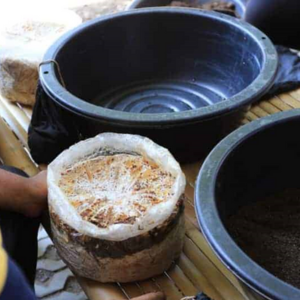
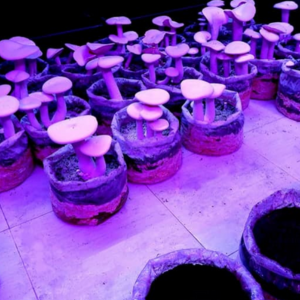
Place:
You can grow mushrooms in well-prepared soil, but the growing process can take anywhere from six months to two or three years. Only a controlled environment plays an effective role in their rapid growth.
Light:
You need a dark room and a humid environment for mushroom production. Although they tolerate some light, a dark room is ideal for them. Generally, ideal places for this fungus to grow are basements, under containers, or places like store rooms where it is always dark.
Temperature:
I mentioned earlier that the temperature for mushroom growth is 18 to 21 degrees Celsius and they cannot grow below 15.5 degrees Celsius. So if you need higher temperatures to grow mushrooms, use a heating pad until you see mycelium. It can raise the temperature up to 21°C and lower it to 15.5°C when mycelium is present.
Watering:
First, you need to keep the mushrooms moist by giving them regular water. One of the most significant ways is to use a damp cloth to cover the tray and moisten it as it dries.
Fertilization:
To fertilize, you first need a tray 14 x 16 inches and 6 inches deep. Fill it with necessary compost fertilizer and inoculate it with spawn.
How to Collect Mushrooms?
The type of mushrooms you decide to grow will determine how long it takes for them to grow. Small mushrooms will start sprouting in a week or 10 days. After a few days or weeks,
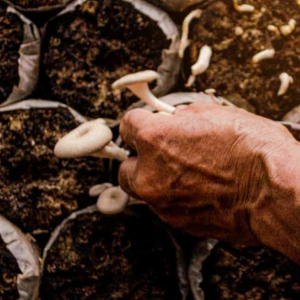
you can harvest them as soon as they turn upwards and their caps separate from the stalks. You can cut their stalks with a knife. Do not pull them to avoid the risk of damaging new fungi around them. If you take good care of the mushrooms, you will get a continuous harvest for the next five to six months.
Mushroom Preservation
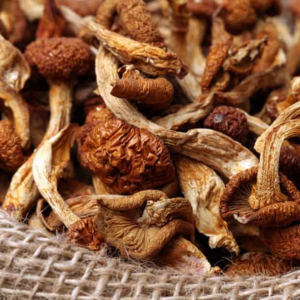
You can store mushrooms in the refrigerator for about two weeks, but as time goes by, they tend to dry out and all the cups will have black spots. Be sure to store the mushrooms completely dry if you want to use them for a long time. Mushrooms can be stored for up to three years if completely dried and stored in a dry place, cool weather, and a dark location. On the other hand, if you store them in the refrigerator, they can spoil at any time.
Reusing the Substrate
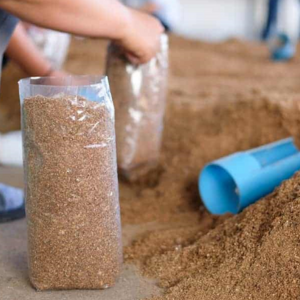
You can use the same cake three times after the first flush without discarding the substrate used to grow the mushrooms. First, dry them for a few days, moisten them properly, and keep them in the chamber. After the third use, you may notice some contaminants; at this time, you should refrain from using the substrate.
Pests and Diseases Affecting Mushrooms
Green Mold:
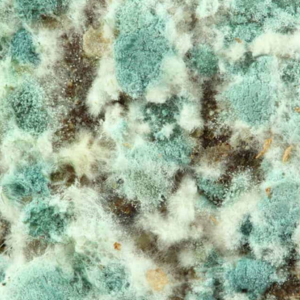
When discussing mushroom diseases, we must address this condition first. It is one of the most destructive fungal diseases. Once the infection occurs, the entire mushroom will be destroyed. If a mushroom is infected with this disease, you will notice a dense layer of white, green, or brown mycelium on the surface. To ensure the safety of your mushrooms, pasteurize the compost and sterilize all equipment before use.
( Mycelium means: Mycelium is a root-like structure of a fungus with many branches. Its normal form is branched, slender, clasping, anastomosing, hyaline threads. )
Dactylium Diseases:
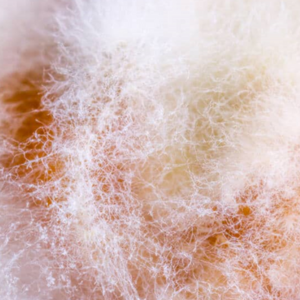
If you observe the growth of white, gray, or pink cottony, netted mycelium on the surface of your mushrooms, then they are infected with Dactylium diseases. Once this fungus appears, your mushrooms become waterlogged and soft, leading to rot. If not treated promptly, your harvest will be ruined. In that case, keep infections under control by regularly monitoring your trays, maintaining cleanliness, and promptly removing any spoiled mushrooms.
Verticillium Spot:
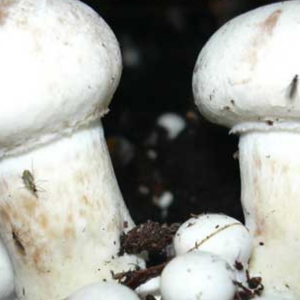
This disease is the most deadly among fungal diseases affecting mushrooms. If it occurs, you will see small spots on the mushroom caps. They will appear blurry, distorted, and slowly turn gray, with dead parts on top. When the infestation is severe, the mushrooms will dry, blister, and deform, leading to a gray mass in the tray. The primary causes of mushroom infestation are flies or infected equipment. You must use salt to dry the blisters, destroy them, and prevent the spread of spores.
